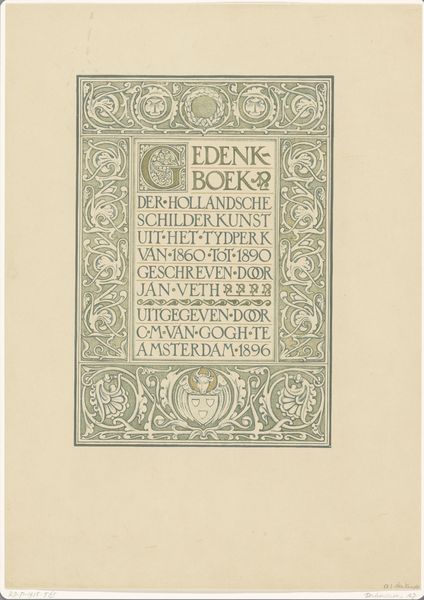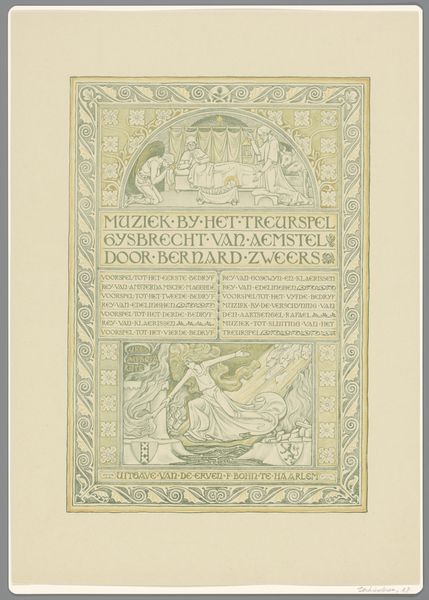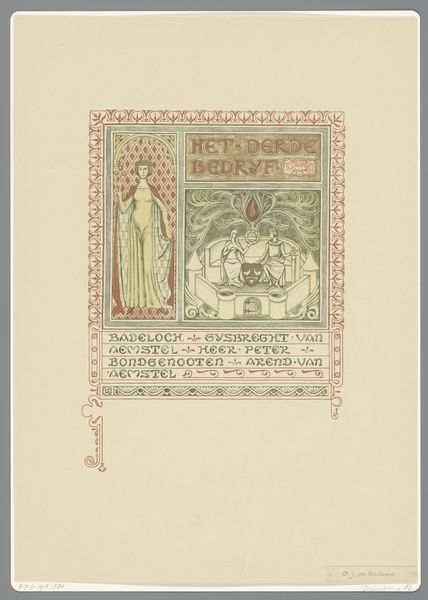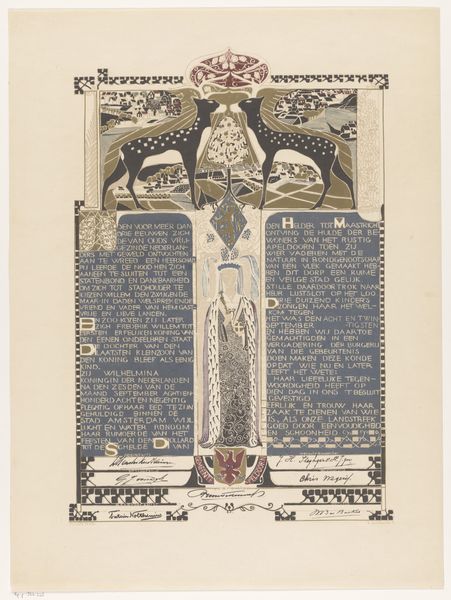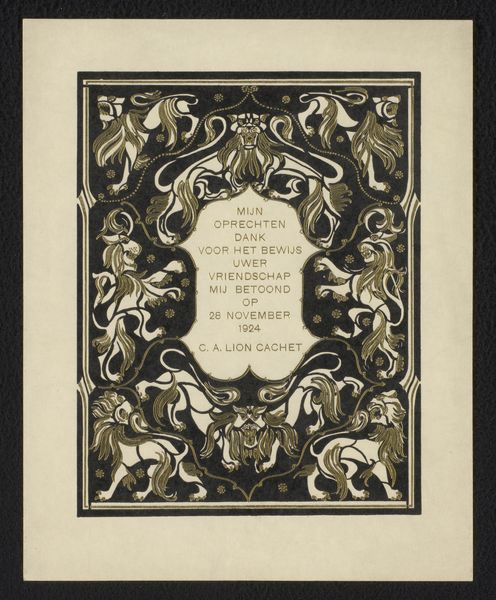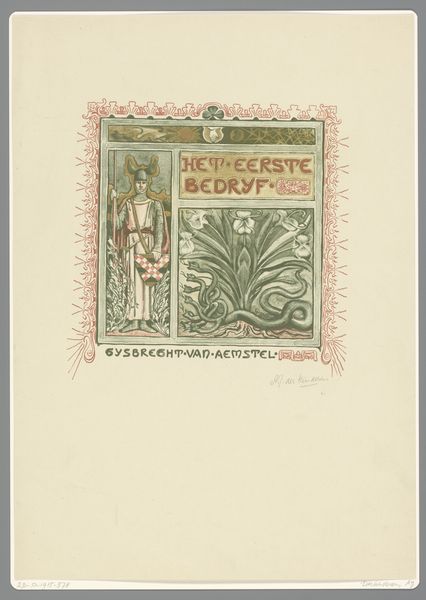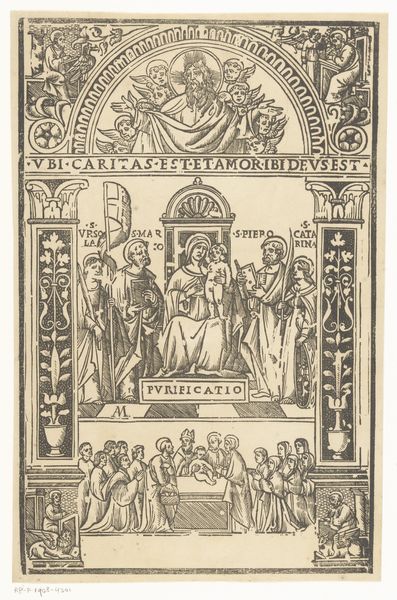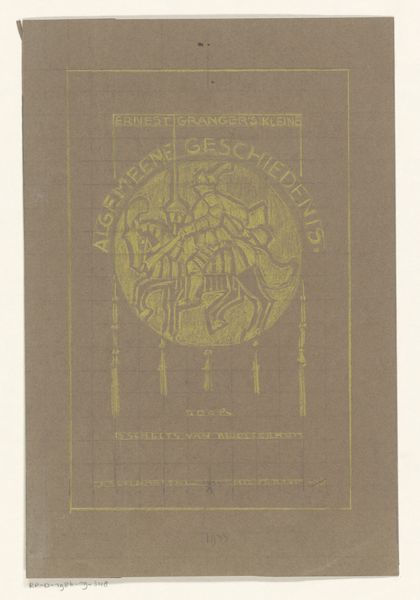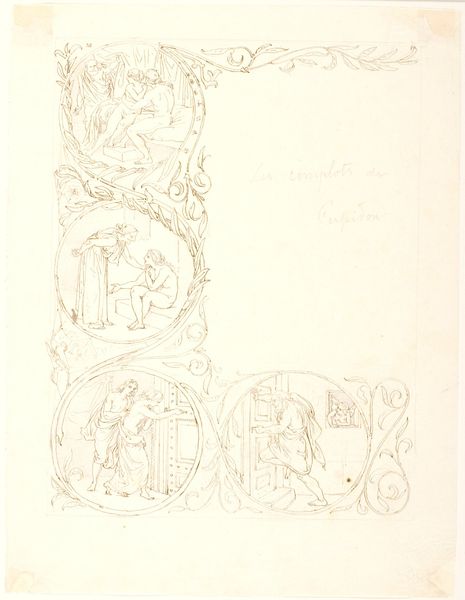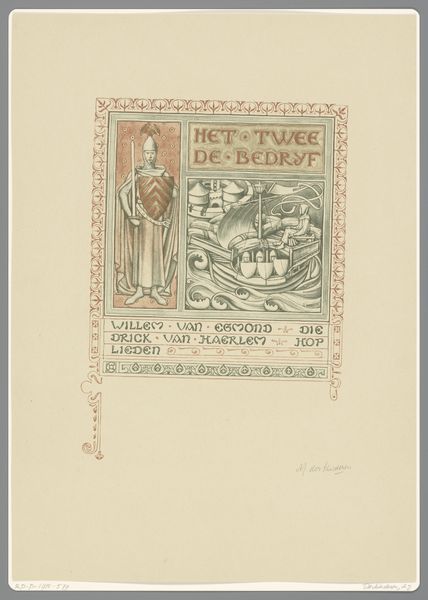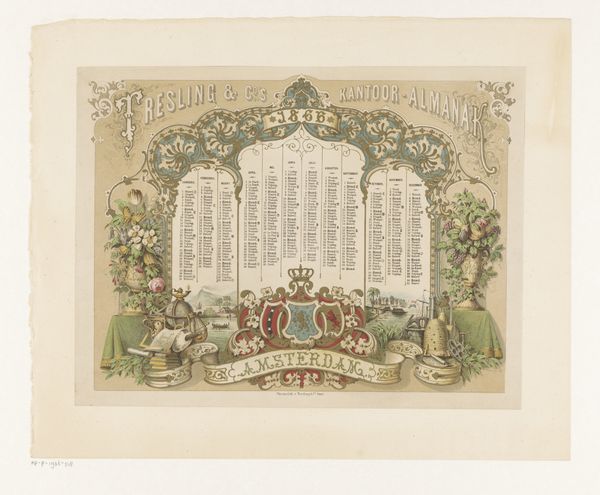
Titelpagina van Gedenkboek: Keuze-tentoonstelling van Hollandsche schilderkunst uit de jaren 1860-1892, gehouden te Amsterdam in Arti et Amicitiae 1893 - 1894
0:00
0:00
drawing, graphic-art, paper, ink, poster
#
drawing
#
graphic-art
#
natural stone pattern
#
aged paper
#
art-nouveau
#
parchment
#
old engraving style
#
woodcut effect
#
retro 'vintage design
#
wood background
#
paper
#
pattern background
#
ink
#
pattern repetition
#
layered pattern
#
poster
Dimensions: height 414 mm, width 295 mm
Copyright: Rijks Museum: Open Domain
Curator: Antoon Derkinderen created this title page for a commemorative book celebrating Dutch painting from 1860 to 1892, a piece made between 1893 and 1894. It's quite striking, isn't it? Editor: Indeed. The sepia tones lend it an air of antiquity, like something discovered in an old archive. There’s also a visual weight to it—all that layering and intricate detail pressing down on the central text. Curator: And it's fascinating to see the Art Nouveau influence, particularly in the stylized figures and the organic, flowing lines framing the text. One has to appreciate Derkinderen’s craft, the quality of the ink, the paper... likely quite a meticulous process for a design meant for reproduction. It bridges the gap between high art and the printed word. Editor: Yes, but look at how deliberately those figures are posed—they echo classical depictions of muses and allegorical figures, the central figure reminiscent of a triumphant goddess. The halo further accentuates this sense of power and spiritual significance; Derkinderen is carefully constructing a symbolic narrative of Dutch artistic achievement. Curator: I see your point, and there’s no doubt the imagery is intentional. But think about the book itself. The raw materials would be chosen to evoke a certain sense of quality; each printed page contributes to the object's worth. And then, who was buying this? It's about more than pretty pictures; it's about investing in cultural capital, solidifying a particular vision of Dutch art history through material culture. Editor: Perhaps. Yet the allegorical figures suggest an ideal; an intention to evoke not just Dutch painting, but *elevated* Dutch painting, worthy of being immortalized. These archetypal figures are clearly used to promote a specific cultural memory, of the glory of that age of painting. Curator: Agreed, and how these visual signifiers function and become circulated in the art world remains highly interesting. Thank you for bringing that perspective. Editor: Likewise, your material considerations brought added weight to this overview.
Comments
No comments
Be the first to comment and join the conversation on the ultimate creative platform.
